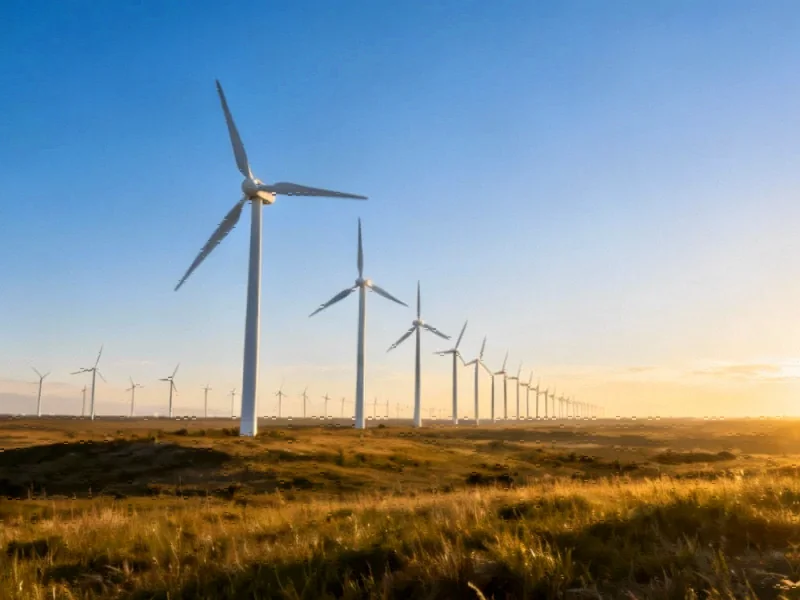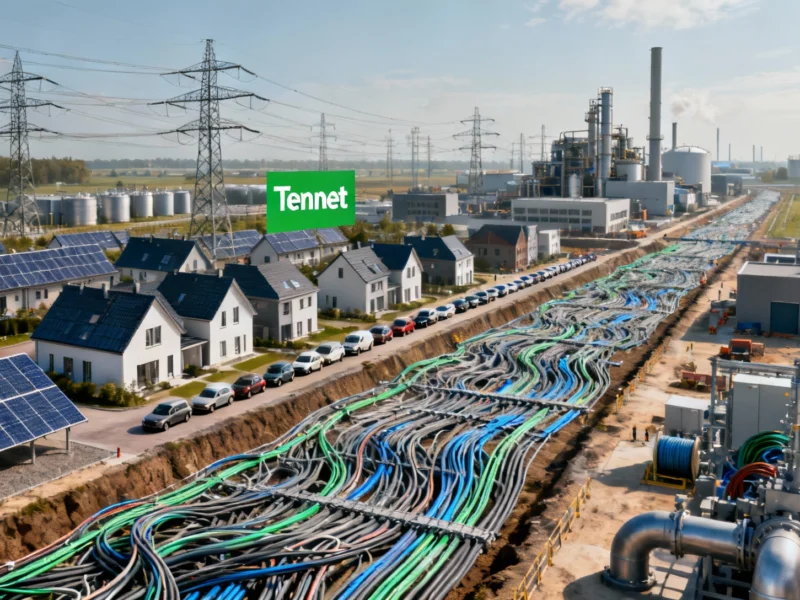Ambitious Wind Energy Targets Set to Transform China’s Power Grid
China’s wind industry has put forward a bold proposal that could dramatically accelerate the country’s clean energy transition. At the annual China Wind Power conference in Beijing, leading turbine manufacturers including Goldwind Science & Technology Co. and Ming Yang Smart Energy Group proposed installing at least 120 gigawatts of wind power capacity annually over the next five years. This ambitious plan would more than double China’s current wind power output by 2030, positioning the country as the undisputed global leader in renewable energy deployment.
Strategic Industry Push for Accelerated Development
The proposal represents a significant escalation in China’s renewable energy ambitions and comes at a critical moment in global climate negotiations. Industry leaders argue that the accelerated timeline is necessary to meet China’s dual carbon goals of peaking emissions by 2030 and achieving carbon neutrality by 2060. The wind sector’s aggressive stance demonstrates how China’s renewable energy industry is taking a proactive role in shaping national climate policy rather than simply responding to government mandates.
This unprecedented industry-led initiative highlights the maturation of China’s wind sector, which has evolved from technology follower to global innovator. The proposed expansion would require substantial investment in manufacturing capacity, grid infrastructure, and workforce development. Industry analysts suggest that meeting these targets would create millions of jobs and position Chinese companies as dominant players in the global wind energy market.
Infrastructure and Technological Challenges
While the proposed expansion offers tremendous opportunity, it also presents significant challenges. China’s power grid must undergo substantial upgrades to accommodate the intermittent nature of wind generation. The country’s existing transmission infrastructure, particularly in remote wind-rich regions, requires modernization to deliver clean electricity to population centers. These infrastructure developments represent both a technical challenge and economic opportunity for Chinese engineering and construction firms.
The rapid scaling also raises questions about supply chain capacity and technological innovation. Chinese manufacturers would need to dramatically increase production of turbines, blades, and towers while maintaining quality standards. This expansion comes amid global competition for rare earth minerals and other critical components essential for wind turbine manufacturing. Recent technology sector developments demonstrate how supply chain constraints can impact ambitious industrial plans.
Integration with Broader Energy Transition
China’s wind power expansion cannot be viewed in isolation from the country’s overall energy strategy. The proposed acceleration complements existing renewable sources and represents a key component of China’s diversified approach to decarbonization. As detailed in our coverage of China’s comprehensive energy transition, the country is pursuing multiple pathways to reduce its carbon footprint while maintaining energy security.
The wind industry’s proposal aligns with broader trends in China’s energy policy, which increasingly emphasizes the integration of various renewable sources. This holistic approach recognizes that wind power’s variability requires complementary generation from solar, hydropower, and energy storage systems. The coordination between different renewable sectors represents a sophisticated evolution in China’s energy planning methodology.
Environmental Considerations and Sustainability
While expanding renewable energy generation offers clear climate benefits, the rapid scaling of wind power must be balanced against other environmental concerns. The manufacturing processes for wind turbines, their installation, and eventual decommissioning all carry environmental impacts that require careful management. These considerations are part of broader environmental industry trends that increasingly influence energy development decisions worldwide.
Chinese regulators and industry participants are increasingly attentive to the full lifecycle environmental impact of renewable energy projects. This includes responsible sourcing of materials, minimizing habitat disruption during construction, and developing recycling solutions for decommissioned turbine components. As the scale of wind development increases, so too does the importance of addressing these secondary environmental considerations.
Global Implications and Market Impact
China’s proposed wind power acceleration carries significant implications for global energy markets and climate efforts. The scale of deployment envisioned would likely drive down costs through economies of scale, benefiting wind energy development worldwide. Chinese turbine manufacturers, already competitive in international markets, would gain additional advantages from domestic market volume.
The proposal also signals China’s commitment to maintaining leadership in renewable energy technology and deployment. As the world’s largest emitter of greenhouse gases, China’s energy transition trajectory significantly influences global climate prospects. The ambitious wind power targets demonstrate how serious industry developments in China are shaping not only domestic energy policy but global climate solutions.
This expansion represents one of the most significant market trends in the global energy sector, with potential ripple effects across technology development, manufacturing, and international climate diplomacy. The coming years will reveal whether this ambitious vision can be translated into tangible progress toward a cleaner energy future.
This article aggregates information from publicly available sources. All trademarks and copyrights belong to their respective owners.
Note: Featured image is for illustrative purposes only and does not represent any specific product, service, or entity mentioned in this article.



